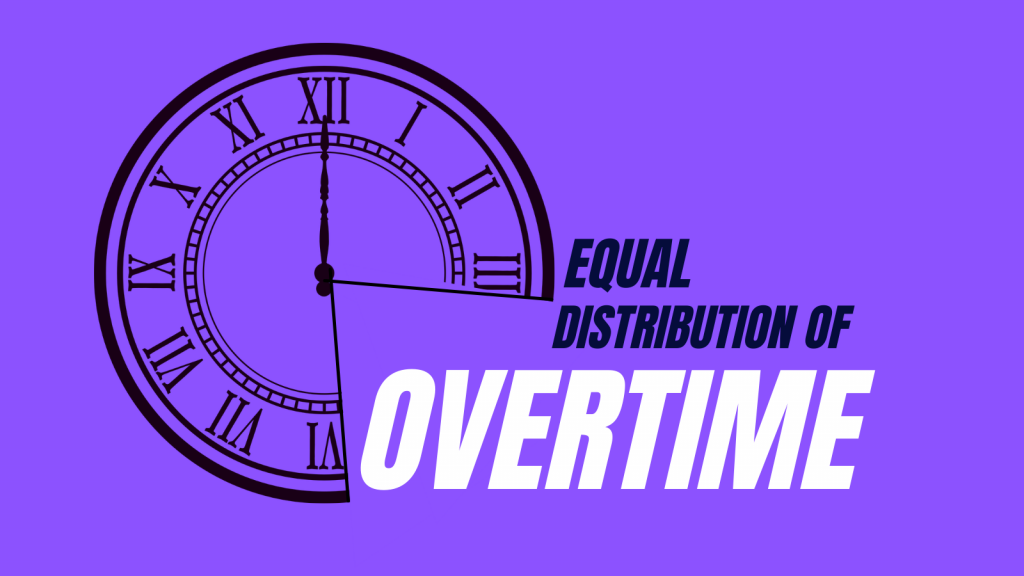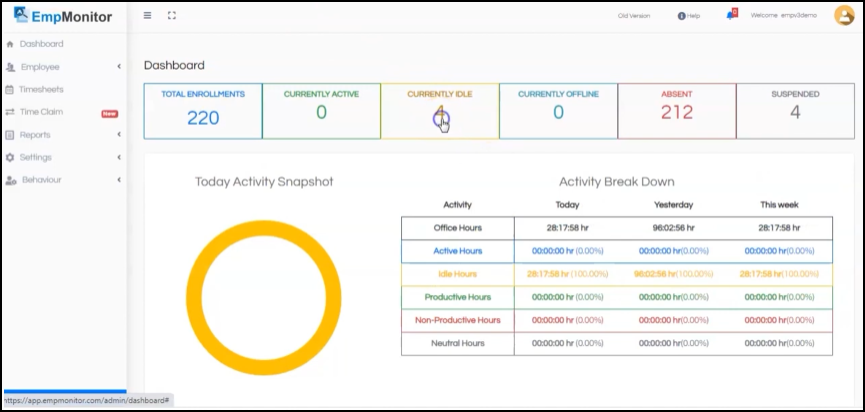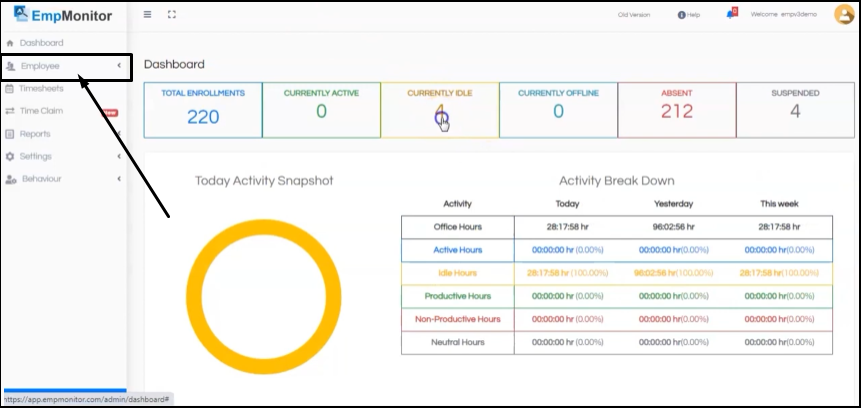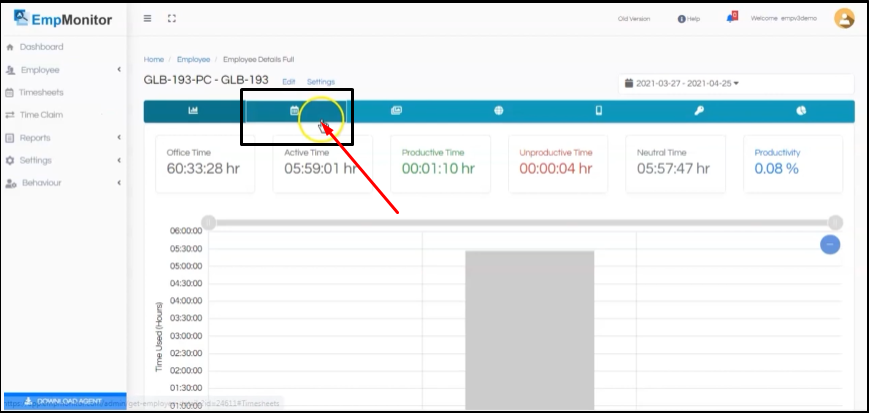What if you never have to work overtime?
Could it possibly affect your organization?
Will it help you with a more equitable work-life balance?
If that is the case, how many hours a week should employees ideally work without stressing themselves while also maintaining productivity for the betterment of the organization?
Well! The most daunting task for any employee in any given workplace is overwork. Fair enough, no one likes to work beyond the typical 9-5 job if the organization does not compensate them with what they deserve, i.e Overtime Pay.
Although, one thing that every manager and employee is aware of is the fact that work can come even when not welcomed. That implies that every business has a period of chaos when they suddenly have a lot of work and need staff to work longer hours to finish a project.
While many people think overtime is unhealthy, it is a good choice for employers in several situations.
No, don’t take me wrong. But if used efficiently, it does wonders for your organization. You need to understand the potential adverse effects on employees and the importance to track overtime effectively. Overtime use is ineffective if it causes employee fatigue, high turnover, or a drop in employee engagement.
Here is where Overtime pay and equalization play their role. So, if you are wondering what it is all about. Head on to read further to uncover some quintessential stuff that you wish you knew before.
OverTime Equalization & OverTime Pay- A Better Understanding
Overtime equalization —
Like I said before, excessive overtime can interfere with an employee’s ability to obtain enough sleep, resulting in health issues for the individual. It also triggers safety and quality issues on the work. Equalizing over time might make it easier for the management to allocate workload equitably across the employees.
It is an attempt to equalize overtime among employees based on criteria such as employee duration and dependability. Organizations, on the other hand, must frequently consider the employees with the most appropriate skill sets.
If overtime is allowed to continue, it may result in an overtime-dependent workforce, increased absenteeism, and reduced productivity. Long-term overtime may be detrimental, even if high levels of overtime are acceptable for short periods.
Overtime Payment —
Overtime is when an employee works more than a set number of hours each pay period, usually a week. Overtime hours are compensated more generously than regular hours.
Overtime compensation must be at least one and a half times the usual pay beyond 40 hours of work in a workweek.
Employees can work in shifts, part-time, or have flexible schedules. Employees might be paid by the project or piece of work they produce while still being eligible for overtime pay.
Many overtime pay calculator can help you with accurately calculating the overtime hours of employees. EmpMonitor is one such tool that can help you with exactly what you want. It will assist you in determining the amount of overtime required to finish all pending jobs on time.
How To Calculate Overtime Pay
To precisely know what to pay for overtime for an employee, the initial step is to determine their regular hourly rate of pay. It will serve as the foundation for subsequent calculations. Once we have done that, the rest should be simple.
Hourly wage rate
To comply with the FLSA, you must determine an hourly rate based on a 40-hour week or actual time worked and modify weekly compensation as appropriate to FLSA.
The employee gets the payment of the amount they earn within an hour.
For example, if an employee gets $20 per hour and works 50 hours a week, they will be paid $300 in overtime compensation.
$20 x 1.5 (overtime rate) x 10 hours (overtime) = $300
Daily Rate
Employees whose compensation is based on a per-day basis have their overtime computed by dividing their total fixed-wage by the number of hours required to work. Calculate the total overtime compensation based on the basic overtime pay.
An employee who works 60 hours and six days a week gets $100 each day. We will need to divide the sum of their weekly wages by the number of hours they worked to figure out their regular rate. The following is the formula for calculating their overtime pay:
$100 x 6 = $600
$600 / 60 hours = $10 (regular rate)
$10 x 1.5 (overtime rate) x 10 hours (overtime) = $150
$600 + $150 = $750 (total)
Weekly rate
The compensation of a non-exempt employee with a fixed schedule is $400 per week with working hours of 40 hours per week. The overtime hours of the employee is 10 hours that makes 50 hours of total working hours.
Divide their weekly compensation by the number of usual hours they work in a week to arrive at their regular hourly rate. The following is the formula for calculating their overtime pay:
$400 / 40 = $10 (regular rate)
$10 x 1.5 (overtime rate) x 10 hours (overtime) = $150
$400 + $150 = $550 (total)
Avoid Overtime With Equalization
Like I already said before, overtime should be a necessity, not a habit. Set up procedures that prevent employees from going over their allotted work hours at your workplace if you want to increase productivity.
Here are five great ways to manage overtime.
Make way for flexible work schedules
Non-traditional working hours can sometimes prove to be the most productive hours or deliver high-quality work. Over half of employees said they would prefer and be more productive doing work late at night rather than in the morning if they needed to get anything done.
It is a win-win situation for both employees and employers as flexible work schedules benefit both of them. Flexible schedules can help employees be more productive and manage their work more efficiently. It lowers the likelihood of overtime.
EmpMonitor can assist you with flexible work schedules. It lets you track employees’ total number of working hours, productive hours, and many more. It eventually leads you to properly analyze the active hours, productive hours, neutral hours with detailed reports, and more, resulting in fair equalization.
Here is how you can check the details of employees in just a few clicks.
1- Login to your EmpMonitor dashboard with your login credentials.
2- EmpMonitor dashboard will occur where you will get a detailed overview of your employees.
3- Click on the employee section on the left corner, just below the dashboard.
4- A pop-up window with the details of employees will appear with Office Time, Productive Time, etc.
5- You can check the employee’s details by clicking on the Timesheets section.
6- You can view the clock-in, clock-out, total hours, active hours, office hours, productive hours, unproductive hours, neutral hours, idle hours, and productivity percentage.
And that’s it, with just a few clicks, you can check the details of employees that will help you calculate their overtime pay with equalization and without any hustle.
Last-minute deadlines- Himalayan Blunder
While most managers avoid overtime, there is one more slip that organizations and managers come across. There are times when organizations come up with urgent deadlines for the next morning, and employees end up staying at work all night to finish the task at hand.
You can ensure deadlines are not set at the last minute, and you can already see employees get back from work on time, and you can avoid overpaying for overtime. Assign deadlines two days ahead of time so that employees have enough time to complete projects without having to work longer hours.
There will be times when last-minute deadlines are unavoidable. But if you succeed in getting your team ready ahead of time, you can also pull this off and help your employees get back from work on time and avoid overpaying for overtime.
Ensure that your employees are properly classified
There is nothing more important than estimating and analyzing employees and classifying them on the basis of exempt and nonexempt employees.
When it comes to overtime, a thorough evaluation of the specific tasks that employees are performing is just as vital as productivity for the company. To avoid overpaying non-exempt staff, managers might potentially move a few responsibilities to exempt employees.
This way, the overtime equalization is set appropriately, and you can avoid misclassification.
Set up policies for overtime
What follows after all of the above keys is to introduce an overtime policy that should include how you will do all of the above—and more. Plan your compensation for extra hours, considering local, state, and federal requirements. Be sure to specify any legal words you employ in your policy.
Management must ensure that the overtime policy is much more than just a few statements in the employee handbook while also being implemented adequately. Before permitting overtime for an employee, the employer must examine a few criteria, such as any unexpected or unanticipated increase in work or demand and the individual’s voluntary desire to work extra to enhance productivity.
An overtime policy can assist you in informing your staff about how overtime compensation works at your organization and avoiding misunderstandings. Managers can talk to the employees working extra hours to figure out the reason behind frequent overtime.
BONUS TIP – Establish a time restriction for your over-timings. Employees may also easily add more hours to their overtime to earn the extra compensation without putting in any extra work. You may avoid time theft by restricting your overtime compensation.
Make the most out of time tracking software
It’s not a scalable option to manually track your employees’ time. Furthermore, keeping track of employee time using the conventional approach of punching cards with overtime information is not enough.
EmpMonitor is a time-tracking software that maintains track of your employees’ time automatically. It features a function that automatically collects employee log records.
Once you know when and who is working on whatever project, you can manage it throughout time. Overtime management is a breeze using EmpMonitor. It displays how many extra hours each person has put in, along with detailed reports and statistics.
Using EmpMonitor, you can effectively divide tasks, reduce tiredness, and increase employee productivity while keeping equalization in mind. Empmonitor is a complete package of employee management software that focuses on monitoring and maintaining the top-notch productivity of employees. So, if you have EmpMonitor on your side, you won’t have to worry about overtime calculation accuracy and equalization in your company.
Also, check out our latest blogs:
WHY COMPUTER TRACKING SOFTWARE IS IMPORTANT? 5 WAYS TO IMPROVE PRODUCTIVITY
7 SPECTACULAR TEAM ENGAGEMENT IDEAS FOR THIS DIWALI
Wrapping It Up
Overtime may be a blessing and a burden at the same time. There are times when a little extra cash from working overtime might come in handy, but overtime comes with tons of drawbacks.
That is why putting all your bets in the right tools that accurately track the overtime pay is a must. EmpMonitor, like I already said before, is one of the most renowned tools that will help you with everything you want.
Thanks for reading my blog. I hope it was both informative and enjoyable. Any suggestions or questions are welcome in the comments section below.

















